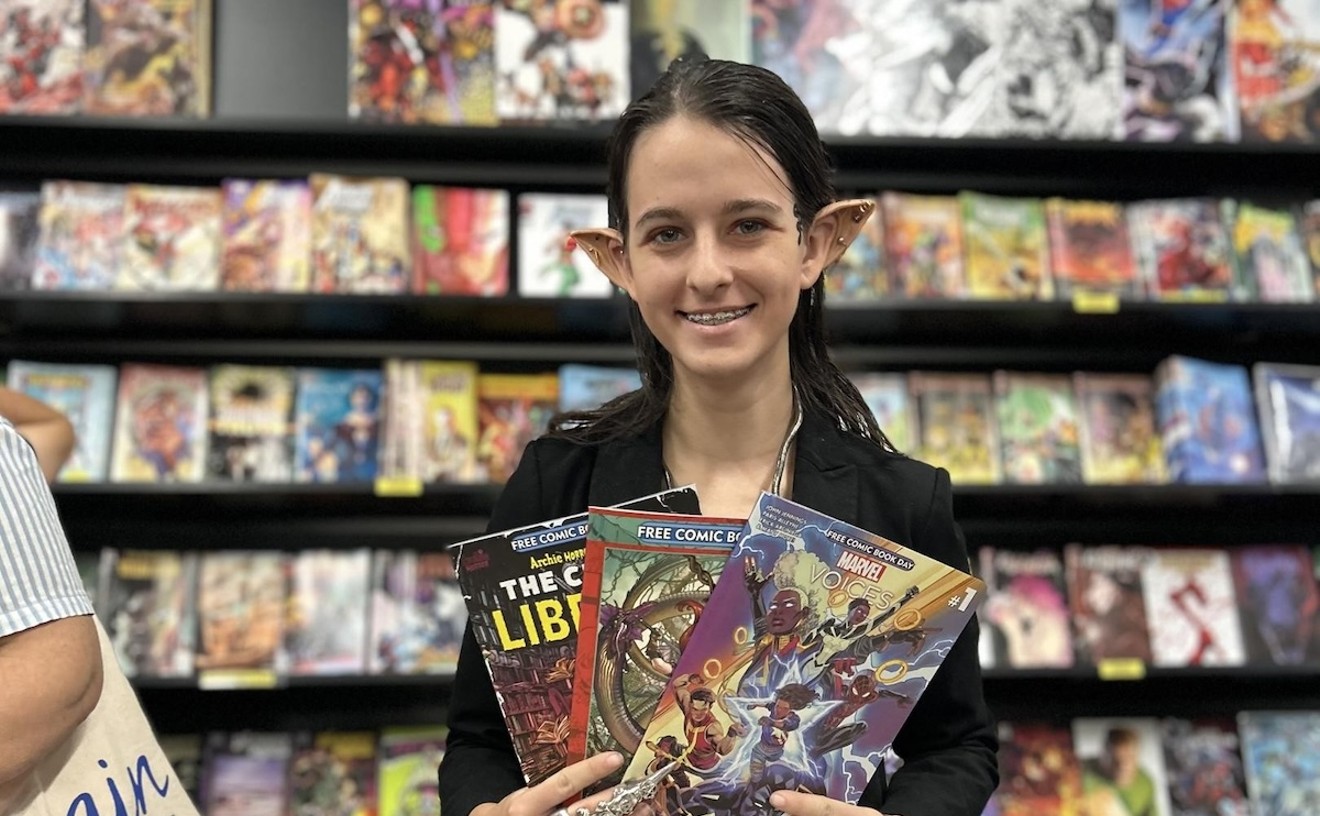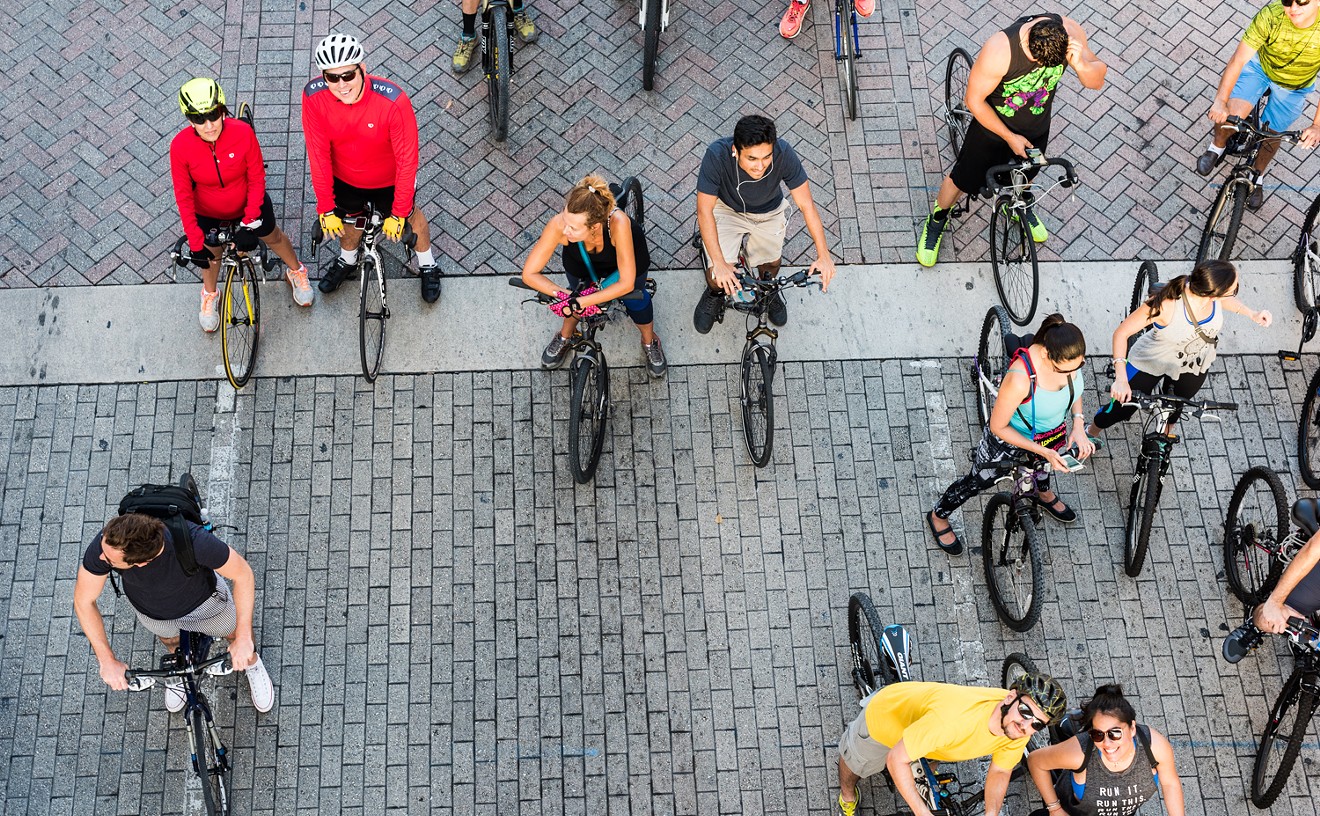In 1985, Cuban artist José Bedia was a rising star in his homeland. He had recently completed a Ford Foundation artist's residency in the United States when the notification arrived. "I was 26 and had just returned to Havana from New York. The Cuban military called me up for mandatory service in Angola at a time when my wife had just given birth to my son. Now, three short months later, I was being shipped to Africa and couldn't say no for fear of retaliation against my family," Bedia recollects.
That unexpected journey to Angola was the catalyst for his decision to leave Cuba. It was also a rare opportunity to venture into the African hinterland to discover the fountainhead of his faith — the Afro-Caribbean religion Palo Monte.
Those experiences and others are the inspiration behind "Transcultural Pilgrim: Three Decades of Work by José Bedia," a new exhibit at the Miami Art Museum featuring 35 works, including large-scale figurative paintings, drawings, and installations marking a major career retrospective. Bedia's work explores his Afro-Caribbean roots, ancient African and Native American religions and symbols, and the myths of indigenous cultures across the globe.
The traveling exhibit was organized by the Fowler Museum at UCLA, where it opened last year. It is the first conclusive survey of his work shown in Miami since Bedia permanently relocated here in 1993.
A member of Cuba's vaunted generation of the '80s, when young artists experimented with new forms of expression often critical of the government, Bedia won international recognition in the first and second Havana Biennials.
During the early '80s, he was also initiated into the Regla de Congo, part of a religion that arrived on the island with West African slaves. His faith is the foundation of his art, and a trio of 1984 drawings on view at MAM shows that the nganga — or cauldron, the central icon of his religion — is a recurring theme in his work.
The drawings depict the nganga as a powerful receptacle of divine and natural forces that acts as a microcosm for elements linking the spiritual and physical worlds. For Palo practitioners, the nganga provides security and stability. It is unique to each initiate.
Typically the cauldrons contain items such as cemetery dirt, herbs, sticks, and human and animal bones. They are mixed with blood offerings.
Wall text at MAM informs that when Bedia was initiated, he received Sarabanda, the spirit guardian of iron implements. So the artist's cauldron bristles with items such as magnets, knives, nails, razor blades, an anvil, a horseshoe, scissors, a hammer, a tortoise shell, and animal antlers — all of which are shown descending into his nganga from the heavens in a drawing here.
But even the nganga couldn't save Bedia in Angola. "People don't realize how terrible that was," he explains. "We were sent there without training, and most of the Cuban combatants were like me, civilians plucked from the jobs to go and fight. With the exception of pilots and [some] others, none of us were soldiers. Even the tanks were operated by former bus and truck drivers."
Bedia sought opportunities to venture into villages to meet locals who shared his beliefs. He also tried to collect sacred implements called matari to take home with him, but found it difficult. He says he was there for six months in 1985 and 1986, and once found himself pointing a rifle at fellow soldiers after they dragged a villager into their truck and attempted to rape her in front of her three children.
"It was like Cuba's Vietnam. We left Luanda in a convoy of 200 trucks and had to cross through mined territory. Along the way, a bridge in front of our caravan was blown up, and we got bogged down in the mud for three days," he recollects.
"We stopped to trade with villagers, and some of the men in my unit pulled a woman carrying a basket of potatoes into the truck and started stripping her naked while her kids watched. I grabbed my rifle and stopped them. Later, one of the commanders pulled me aside and told me to be careful during combat because I might end up a victim of friendly fire. It was traumatic. That's when I decided that if I made it out of there alive, with my limbs and sanity intact, I would leave Cuba," says Bedia, whose works often offer a scathing commentary on colonialism.
A sprawling ink-on-amate-paper piece from 1991 captures the moment Bedia left his homeland.
Titled Si en Mi Tierra No Hay Sol, Yo Brinco al Lado Allá (If There Is No Sun in My Country, I Jump to the Other Side), it depicts the artist straddling two worlds like the Colossus of Rhodes, with one foot on a seaside city to the right of the composition and the other on a busy highway filled with automobiles to the left. On his back he carries his nganga, which ties him to his ancestors and is the only possession too valuable to leave behind, reflecting that his cultural roots are linked more to religion than nationality.
The exhibit is organized in sections that include his travels to Mexico, his studies with the Lakota peoples in North America, and his visits with shamans in the Peruvian Amazon.
Other sections feature Bedia's later travels to Zambia. There is also the artist's tribute to Caribbean revolutionary figures who were Palo practitioners and combined their faith with social justice and activism.
Works such as Intipi (Sweat Lodge), created in 1995, reflect Bedia's experiences during his initial visit to the United States, before he was shipped to Angola. It records his first powerful spiritual experience with Native American traditions. "I visited the Rosebud Reservation in South Dakota where I met Leonard Crow Dog, a Lakota medicine man and spiritual leader who was involved in the Wounded Knee incident at the Pine Ridge Indian Reservation during the 1970s," he says. "The experience in the sweat lodge was very powerful and complicated to explain but dealt with summoning the Great Spirit."
Bedia says indigenous religions, with traditions rooted in prehistory, are the oldest on the planet. "I have seen Crow Dog summon eagles under a cloudless sky until several of the birds appeared from nowhere and began circling overhead. All life force is impregnated with what some call wakan and others call mana. This power endures even after something is dead."
While visiting South American shamans and ingesting ayahuasca, a brew made with psychotropic herbs, the artist found himself in the presence of the Otorongo Jaguar and Great Anaconda spirits. "It was a fundamental experience for me," says Bedia, who painted his encounter with the black jaguar. "Anyone interested in visual arts should have such an experience. You see a great many things during these experiences, which I later try to interpret in my work."
As much an anthropologist of the soul as a gifted artist, Bedia peels back the veil on the sacred and unknown with an undeniable force all his own.










